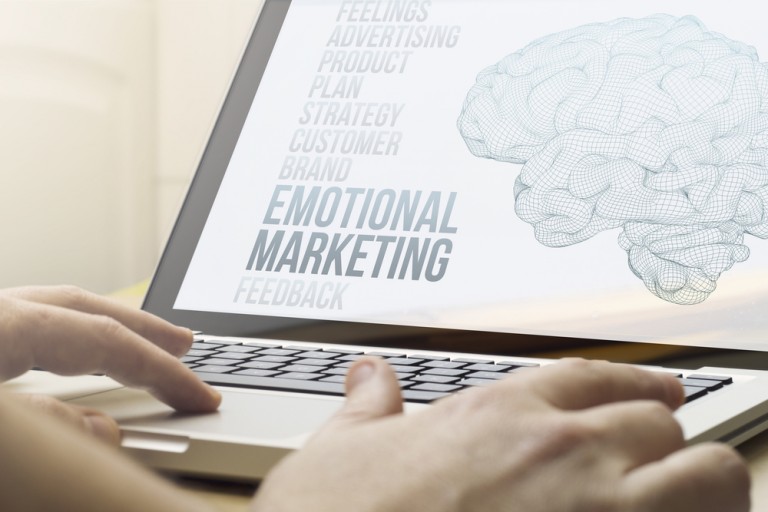Marketing professionals have known for decades that the key to marketing is emotion. You can use specific triggers to elicit an emotional response. This can help build trust with customers and increase your chances of making a sale.
But, how exactly do you use emotion? What types of emotions should you inspire? In order to answer these questions, you will need to understand the role of emotion in marketing.
The Wheel of Emotions
As mentioned, the concept of using emotion in marketing is not a new approach. Specific phrases, words, colors, and images have always been used in advertising to make a connection with customers.
In the 1980’s, Robert Plutchik, a professor from the Albert Einstein College of Medicine and the University of South Florida, decided to research human emotions. The result of his studies is the so-called “wheel of emotions.”
During his research, Robert uncovered 8 primary emotions:
- Anger
- Anticipation
- Joy
- Trust
- Fear
- Surprise
- Sadness
- Disgust
Obviously, there are certain emotions that you do not want to use in marketing. For example, you do not want to promote disgust and anger when promoting a product. But, conveying a sense of joy, trust, or anticipation can help with your marketing campaigns.
These 8 emotions are further divided into more specific emotions. You can go from joy to serenity. You can go from anticipation to interest. You can even combine emotions to get a specific response, such as combining interest and serenity to create a sense of optimism.
A separate study looked at the emotions evoked by viral content. This study goes even further to show that negative emotions do not have a place in marketing. Researchers found that the top 10 emotions used in the most popular viral content included:
- Amusement
- Interest
- Surprise
- Happiness
- Delight
- Pleasure
- Joy
- Hope
- Affection
- Excitement
There is not a single negative reaction in that list. So, the simple truth is that positive content will help create more attention than negative content. This does not mean that there is no place for negative emotion.
The Use of Negative Emotions in Marketing
If you open up the news, you will find plenty of examples of negative emotions. The headlines are constantly filled with horrible news that inspires negative reactions, including anger, disgust, rage, and fear. Though, these emotions are typically used to promote a news story —not market a product or service.
Again, this does not mean that there is never a reason to use negative emotion. Eliciting fear or terror has long been a successful marketing strategy for various industries.

Along with the news industry, you can see these emotions in advertising for home security companies and anti-virus software. Both of these products are marketed based on the fear of being attacked.
However, for the vast majority of products and services, you will want to go in the other direction. You will want to use positive emotions to connect with your target audience.
Evoking a Sense of Amusement
Amusement is a popular emotion to attempt to use in marketing. Unfortunately, it is not always easy to create humor that appeals to everyone. That is why you need to be careful when trying to use amusement.
If your humor fails, you may end up eliciting a different reaction than you had hoped for. You may end up angering your audience. So, amusement may not be the best option, unless you know your audience and know that you can create a humorous marketing campaign.
For those that decide to try their hand at humor, you should think about the medium you are using. For example, it is easier to convey humor in visual content than in audio or text-based content. This includes the use of videos and images.
Creating Interest in a Product or Service
Interest is another commonly used emotion. It can be used in virtually any industry. One of the most effective ways to build interest is to showcase or highlight one specific feature of your product or service, without going into too much detail.
Marketing campaigns that focus on building interest are often used leading up to the release or launch of a new product. You can create buzz for an upcoming product by using interest as your primary emotion.
Using Surprise to Get Attention
The emotion of surprise is less commonly used in marketing, as it is hard to surprise people in the age of the internet. Though, if you can manage to surprise your audience, you can expect a good reaction.
As an example of using surprise in a marketing campaign, you could unveil a secret or little-known fact about the production of your product or service.
Volkswagen did exactly this with their “lemon” ads. They let it be known that any cars rolling down the assembly line that showed any flaws were immediately scrapped. Even the smallest blemish would be considered enough to scrap the vehicle.
This hit home with their target audience and helped Volkswagen succeed in the USA, despite the fact that Volkswagen was founded in Nazi Germany.
Using Happiness and Joy to Connect with Your Audience
The previously discussed emotions are not always the easiest to implement in a marketing campaign. This is part of the reason that so many businesses rely on happiness and joy to get a response.
Using cuddly animals, babies, and other images that make people happy can evoke a positive reaction from your target audience. Though, there are other ways to create these emotions without the use of visuals.
Simply sharing good news about your company can help consumers see your business in a positive light. If you are constantly sharing news about setbacks and difficulties, then people will associate your business with despair and negativity. Focus on the positive and people will think positive thoughts.
Creating a Sense of Hope
Creating a sense of hope can also be used to market a product or service. For example, explaining how your product or service can help someone going through a difficult time creates a sense of hope. This tactic is often used with medications, supplements, and fitness products.
Inspiring Affection with Your Advertisements
Affection is another way to reach your target audience. Affection is one of the most effective emotions for building loyalty and trust with your customers.
Explaining how your products or services have helped people or improved the quality of life for consumers helps to inspire affection. Showcasing real examples of your product in use and how it has helped is an effective way to market your product.
Building Excitement for a Product
Excitement can be created by creating a sense of urgency or by limiting the details used in your marketing campaign. This is another example of how an emotion can be used to build buzz about an upcoming product.
Final Thoughts on Using Emotion in Marketing
People have emotions. Choosing to ignore this fact can limit your ability to connect with your customers. If you are not already using emotion in your marketing campaigns, then remember the information discussed.
It is not difficult to get started. You simply need to choose the emotion that you want to convey. Consider successful marketing campaigns that you have seen recently. Think about what emotions the commercial or advertisement is trying to create.
This will help you learn more about the use of emotion in marketing so that you can use these same tactics in your marketing efforts.
This is a Contributor Post. Opinions expressed here are opinions of the Contributor. Influencive does not endorse or review brands mentioned; does not and cannot investigate relationships with brands, products, and people mentioned and is up to the Contributor to disclose. Contributors, amongst other accounts and articles may be professional fee-based.

